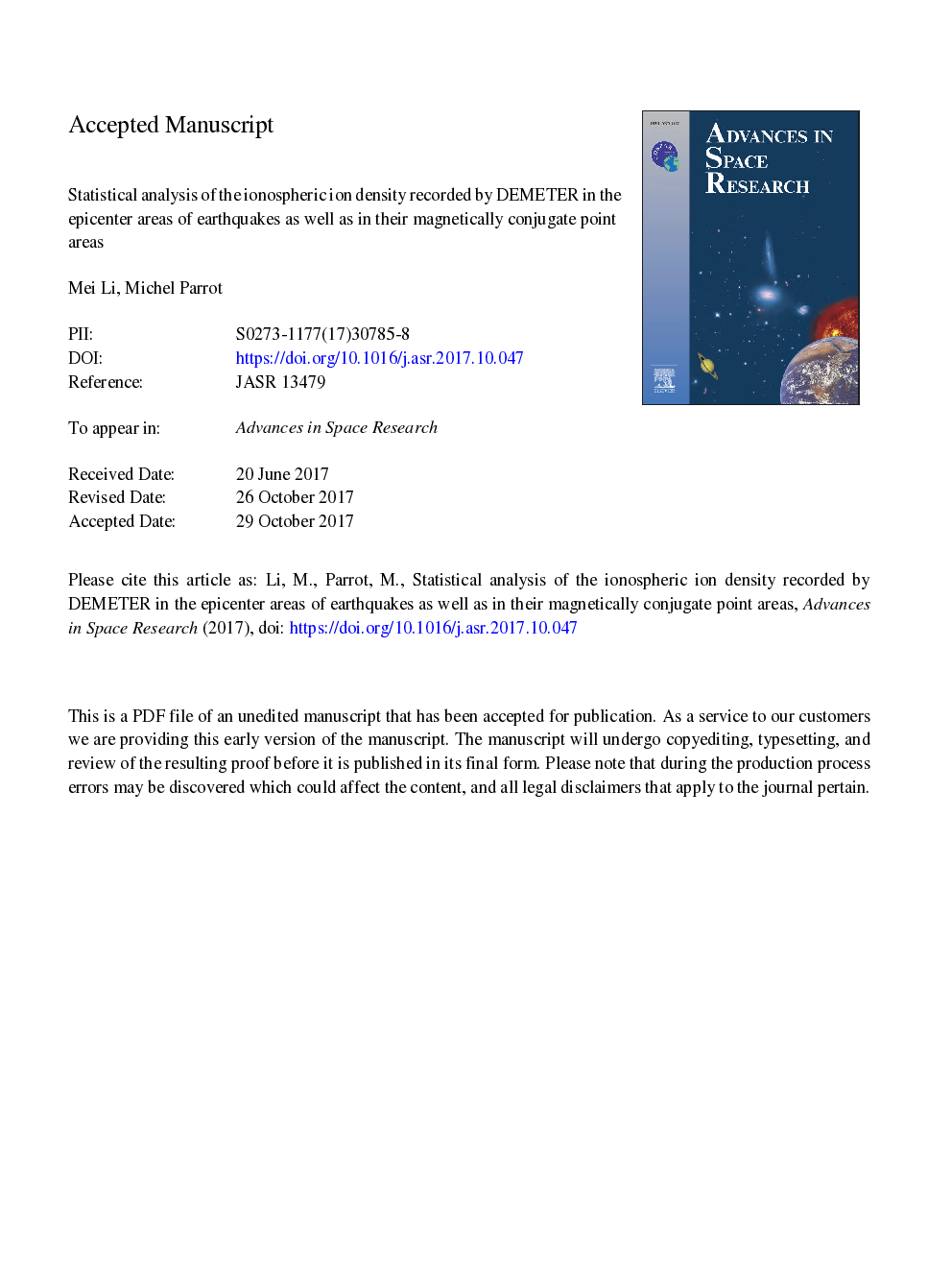| Article ID | Journal | Published Year | Pages | File Type |
|---|---|---|---|---|
| 8132301 | Advances in Space Research | 2018 | 18 Pages |
Abstract
Results of a statistical variation of total ion density observed in the vicinity of epicenters as well as around magnetically conjugated points of earthquakes are presented in this paper. Two data sets are used: the ion density measured by DEMETER during about 6.5â¯years and the list of strong earthquakes (MWâ¯â¥â¯4.8) occurring globally during this period (14,764 earthquakes in total). First of all, ionospheric perturbations with 23-120â¯s observation time corresponding to spatial scales of 160-840â¯km are automatically detected by a software (64,287 anomalies in total). Second, it is checked if a perturbation could be associated either with the epicenter of an earthquake or with its magnetically conjugated point (distanceâ¯<â¯1500â¯km and timeâ¯<â¯15â¯days before the earthquake). The index Kpâ¯<â¯3 is also considered in order to reduce the effect of the geomagnetic activity on the ionosphere during this period. The results show that it is possible to detect variations of the ionospheric parameters above the epicenter areas as well as above their conjugated points. About one third of the earthquakes are detected with ionospheric influence on both sides of the Earth. There is a trend showing that the perturbation length increases as the magnitude of the detected EQs but it is more obvious for large magnitude. The probability that a perturbation appears is higher on the day of the earthquake and then gradually decreases when the time before the earthquake increases. The spatial distribution of perturbations shows that the probability of perturbations appearing southeast of the epicenter before an earthquake is a little bit higher and that there is an obvious trend because perturbations appear west of the conjugated point of an earthquake.
Keywords
Related Topics
Physical Sciences and Engineering
Earth and Planetary Sciences
Space and Planetary Science
Authors
Mei Li, Michel Parrot,
